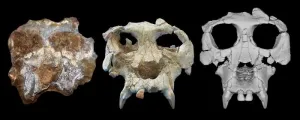(Press-News.org) Exposure to a large-scale disaster, such as a tsunami, impacts population health over a decade later. A new study by an inter-disciplinary team of researchers in the United States and Indonesia has found that women who lived along the coast of Aceh, Indonesia when it was hit by waves from the 2004 tsunami have lower cortisol levels 14 years later than women who lived in other, nearby coastal communities that were not directly affected.
Cortisol is a stress hormone produced by the adrenal glands. Cortisol levels rise in response to stress as part of the fight or flight response, but consistently elevated stress can result in dysregulation of the hypothalamic-pituitary-adrenal (HPA) axis. The study links the stresses from exposure to the tsunami to “burnout” of the HPA-axis manifest in low cortisol levels over the long-term.
“These effects are greatest for women who reported elevated levels of post-traumatic stress symptoms for two years after the tsunami,” said Elizabeth Frankenberg who, with Duncan Thomas and Cecep Sumantri, leads a long-term survey project, the Study of the Tsunami Aftermath and Recovery (STAR).
They and their colleagues have been studying survivors of the Indonesian tsunami who were first interviewed before the tsunami. For this research, they collected hair samples from adults 14 years after the tsunami. “Ralph Lawton was a Duke undergraduate and Robertson Scholar when he went to Indonesia to collect the hair and establish the assay in our lab in Yogyakarta: he is incredibly impressive and the first author of the manuscript,” said Duncan Thomas.
He continued that “An important finding is that people with low levels of cortisol are in worse physical and psycho-social health 14 years after the tsunami, evidence of the long reach of the stresses of the tsunami and its aftermath.”
Elizabeth Frankenberg pointed out that visually, the damage wrought by the Indian Ocean tsunami on the built and natural landscape along the coast of Aceh, Indonesia, looks remarkably similar to the damage from hurricanes and intense storms along the coast of North Carolina and other parts of the U.S. “Lessons learned from following people in Aceh over 20 years provides important insights into the likely longer-term impacts of climate change on populations in the U.S. and across the globe,” said Frankenberg.
STAR is a collaborative project involving investigators at the University of North Carolina at Chapel Hill, Duke University, SurveyMETER (Indonesia), Harvard University, the University of California, Los Angeles (UCLA) and the University of Southern California. This research received financial support from the National Institutes on Aging (R01AG031266, R01 AG065395, R24AG054365 and T32AG51108), the Eunice Kennedy Shriver National Institute for Child Health and Human Development (R01HD052762, P2C HD050924), National Institute of General Medical Sciences (T32GM144273) and the Wellcome Trust (OPOH 106853/A/15/Z).
Exposure to a large-scale disaster, such as a tsunami, impacts population health over a decade later. A new study by an inter-disciplinary team of researchers in the United States and Indonesia has found that women who lived along the coast of Aceh, Indonesia when it was hit by waves from the 2004 tsunami have lower cortisol levels 14 years later than women who lived in other, nearby coastal communities that were not directly affected.
Cortisol is a stress hormone produced by the adrenal glands. Cortisol levels rise in response to stress as part of the fight or flight response, but consistently elevated stress can result in dysregulation of the hypothalamic-pituitary-adrenal (HPA) axis. The study links the stresses from exposure to the tsunami to “burnout” of the HPA-axis manifest in low cortisol levels over the long-term.
“These effects are greatest for women who reported elevated levels of post-traumatic stress symptoms for two years after the tsunami,” said Elizabeth Frankenberg who, with Duncan Thomas and Cecep Sumantri, leads a long-term survey project, the Study of the Tsunami Aftermath and Recovery (STAR).
They and their colleagues have been studying survivors of the Indonesian tsunami who were first interviewed before the tsunami. For this research, they collected hair samples from adults 14 years after the tsunami. “Ralph Lawton was a Duke undergraduate and Robertson Scholar when he went to Indonesia to collect the hair and establish the assay in our lab in Yogyakarta: he is incredibly impressive and the first author of the manuscript,” said Duncan Thomas.
He continued that “An important finding is that people with low levels of cortisol are in worse physical and psycho-social health 14 years after the tsunami, evidence of the long reach of the stresses of the tsunami and its aftermath.”
Elizabeth Frankenberg pointed out that visually, the damage wrought by the Indian Ocean tsunami on the built and natural landscape along the coast of Aceh, Indonesia, looks remarkably similar to the damage from hurricanes and intense storms along the coast of North Carolina and other parts of the U.S. “Lessons learned from following people in Aceh over 20 years provides important insights into the likely longer-term impacts of climate change on populations in the U.S. and across the globe,” said Frankenberg.
STAR is a collaborative project involving investigators at the University of North Carolina at Chapel Hill, Duke University, SurveyMETER (Indonesia), Harvard University, the University of California, Los Angeles (UCLA) and the University of Southern California. This research received financial support from the National Institutes on Aging (R01AG031266, R01 AG065395, R24AG054365 and T32AG51108), the Eunice Kennedy Shriver National Institute for Child Health and Human Development (R01HD052762, P2C HD050924), National Institute of General Medical Sciences (T32GM144273) and the Wellcome Trust (OPOH 106853/A/15/Z).
END
Study shows long-term health impacts after exposure to environmental disaster
2023-10-16
ELSE PRESS RELEASES FROM THIS DATE:
Extinct ape gets a facelift, 12 million years later
2023-10-16
A new study led by scientists at the American Museum of Natural History, Brooklyn College, and the Catalan Institute of Paleontology Miquel Crusafont has reconstructed the well-preserved but damaged skull of a great ape species that lived about 12 million years ago. The species, Pierolapithecus catalaunicus, may be crucial to understanding great ape and human evolution. The researchers describe their findings today in the journal Proceedings of the National Academy of Sciences.
Pierolapithecus catalaunicus, a species from northeastern Spain first described in 2004, was one of a diverse group of now-extinct ...
Signatures of the Space Age: Spacecraft metals left in the wake of humanity’s path to the stars
2023-10-16
WEST LAFAYETTE, Ind. – The Space Age is leaving fingerprints on one of the most remote parts of the planet — the stratosphere — which has potential implications for climate, the ozone layer and the continued habitability of Earth.
Using tools hitched to the nose cone of their research planes and sampling more than 11 miles above the planet’s surface, researchers have discovered significant amounts of metals in aerosols in the atmosphere, likely from increasingly frequent launches and returns of spacecraft and satellites. That mass of metal is changing atmospheric chemistry in ways that ...
Stress levels worse in women who have heart attacks with blockages, study finds
2023-10-16
Stress and depression are known to increase risk of heart attack, especially among women. They’ve also been linked to worse recovery. But does stress and depression contribute more to women with heart attacks with open arteries or blocked arteries? That’s what a new study published in the Journal of the American College of Cardiology aimed to find out.
Researchers found stress and depression were indeed common among women at the time of heart attack and for two months after. But they also found that women with heart attacks due to blockages (MI-CAD) in their coronary arteries had higher ...
The new robot is taking its first intuitive steps
2023-10-16
When walking on the sidewalk, a person is able to avoid puddles, other walkers, and cracks in the pavement. It may seem intuitive – and that's because it is.
There’s actually a biological component that allows humans and other mammals to navigate our complex environments. Central Pattern Generators (CPG) are neural networks that produce rhythmic patterns of control signals for limbs using simple environmental cues. When we quickly step away to avoid something blocking our path, that’s ...
Neutrons see stress in 3D-printed parts, advancing additive manufacturing
2023-10-16
Using neutrons to see the additive manufacturing process at the atomic level, scientists have shown that they can measure strain in a material as it evolves and track how atoms move in response to stress.
The automotive, aerospace, clean energy and tool-and-die industries — any industry that needs complex and high-performance parts — could use additive manufacturing,” said Alex Plotkowski, materials scientist in ORNL’s Materials Science and Technology Division and the lead scientist of the experiment. Plotkowski and his ...
How to tell if your boss is a ‘corporate psychopath’
2023-10-16
Findings from research to help the business world identify destructive ‘corporate psychopaths’ will be presented at the Chelmsford Science Festival on Monday, 23 October.
Dr Clive Boddy of Anglia Ruskin University, a pioneer in the field of corporate psychopathy, will discuss his research, published in the International Journal of Market Research, looking at how the financial industry can identify, manage and, if necessary, remove these individuals.
Around 1% of the adult population are ...
Ochsner Health Recipient of the 2023-24 WebMD Choice Awards
2023-10-16
NEW ORLEANS, La. - Ochsner Health was named among the “Best Hospitals According to Patients & Health Care Providers” by WebMD, an online publication for health news and information.
The 2023 WebMD Choice Awards recognized a select group of 167 health systems with Elite Choice Awards, WebMD Patient Choice Awards, and Medscape Physician Choice Awards. Results were gathered via a survey of a national audience encompassing thousands of patients and healthcare clinicians to determine which hospitals they believe deliver the best quality and treatments. The awards program identifies the “best in class” ...
Carnegie Mellon University's Synergy Lab releases three papers on ubiquitous sensing
2023-10-16
Researchers from Carnegie Mellon's Systems, Networking, and Energy Efficiency (Synergy) Lab will present several multi-year studies on their work around ubiquitous sensing at this week's ACM International Joint Conference on Pervasive and Ubiquitous Computing (UbiComp).
The works unveil several innovative systems and explain how the collected data can be converted to offer useful insights, all while ensuring the privacy of the individuals being monitored.
Led by School of Computer Science Associate Professor Yuvraj Agarwal, ...
Insilico Medicine presents data on AI-designed cancer drugs at 3 major cancer conferences
2023-10-16
Clinical stage artificial intelligence (AI) drug discovery company Insilico Medicine (“Insilico”) has been invited to present scientific data on its novel anti-cancer assets at three major upcoming cancer conferences -- the European Society for Medical Oncology (ESMO) conference in Madrid Oct. 20-24, 2023; the Society of Immunotherapy of Cancer (SITC) conference Nov. 1-5, 2023 in San Diego; and the San Antonio Breast Cancer Symposium (SABCS) Dec. 5-9, 2023.
Small molecule oncology ...
American Society of Anesthesiologists recognizes Philip G. Morgan, M.D., and Margaret M. Sedensky, M.D., with its Excellence in Research Award
2023-10-16
SAN FRANCISCO — The American Society of Anesthesiologists (ASA) today presented Philip G. Morgan, M.D., and Margaret M. Sedensky, M.D., with its 2023 Excellence in Research Award in recognition of their extensive research focused on understanding how anesthetics work and whether certain anesthetics are safe for children with mitochondrial disease. The award is presented annually for outstanding achievement in research that has had, or is likely to have, an important impact on the practice of anesthesiology.
Drs. Morgan and Sedensky are professors in the Department of Anesthesiology ...




